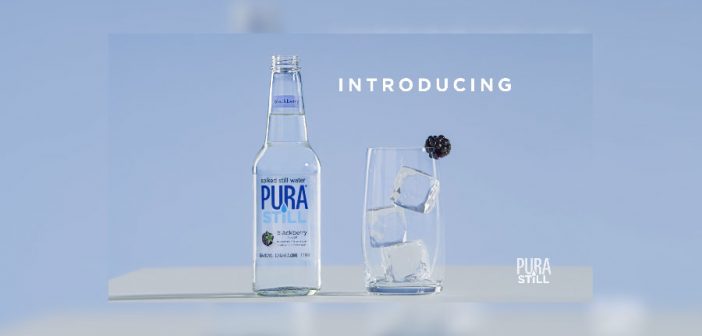Pura Still capitalizes on the spiked seltzer trend, without the bubbles
A beer marketer is trying to gain notice with a new glass-bottled water brand that will get you buzzed. Fifco USA, whose brands include Labatt and Genesee, recently debuted what it calls a “spiked still water” that contains about as much alcohol as a light beer.
The brand, called Pura Still, is positioned to seize on the spiked seltzer trend by appealing to health-conscious drinkers who don’t want the fizz. The water has 90 calories, one gram of cane sugar and two grams of carbohydrates. The alcohol content is 4.5 percent. Ingredients include a splash of coconut water. It is available in blackberry, mango and mandarin orange flavors.
The drink is considered a malt beverage, but does not resemble a beer in any way. And it’s a lot lighter than most traditional flavored malt beverages on the market, like Mike’s Hard Lemonade.
“It tastes like still water with a hint of flavor,” says Jennifer McCauley, who oversees the brand for Fifco, formerly known as North American Breweries. The drink is made via a “triple filtration process that removes all of the aroma, all of the color,” she says.
Alcoholic still water is rare, but not unprecedented. In 2007, Diageo marketed Smirnoff Source, a malt-beverage based drink that contained spring water and alcohol, but it was later discontinued.
Spiked bubbly water began rising in popularity in 2016 and plenty of brands have flooded the market since then, with brands such as White Claw Hard Seltzer (from the owner of Mike’s Hard) and Truly Spiked & Sparkling (from Boston Beer) taking up increasing shelf space. Pura Still sees an opportunity with people who aren’t fond of bubbles.
“Bloating is a big thing. A lot of people are talking about it,” McCauley says. “The fact that Pura Still is non-carbonated is definitely a huge benefit.”
The bubble-free pitch is at the center of the brand’s launch campaign, which comes from Burns Group. Ads say Pura Still “won’t let bubbles weigh you down.” The campaign includes a partnership with pro soccer player Carli Lloyd, who is expected to be featured on social media.
“By highlighting the brand’s anything-but-flat personality the campaign gets consumers excited about a whole new drink category, and a new way to live well,” Joanne McKinney, CEO of Burns Group, said in a statement.
Wellness has emerged as a major trend in the alcohol category as marketers put a new focus on low-calorie options with less alcohol. For instance, MillerCoors this spring is planning to launch a new flavored malt beverage brand called Cape Line that it is billing as “sparkling cocktails.” The 120-calorie drinks contain 4.5 percent alcohol with no artificial flavors.
Meanwhile, Anheuser-Busch InBev is revamping its SpikedSeltzer brand—a pioneer in the category that the brewer acquired in 2016—by taking out all the sugar and reducing the calorie count to 90, according to a recent report in Beer Business Daily. It will be renamed Bon & Viv SpikedSeltzer and is rumored to be in contention to grab one of the brewer’s Super Bowl ad slots.
–
This article first appeared in www.adage.com
Seeking to build and grow your brand using the force of consumer insight, strategic foresight, creative disruption and technology prowess? Talk to us at +9714 3867728 or mail: info@groupisd.com or visit www.groupisd.com


